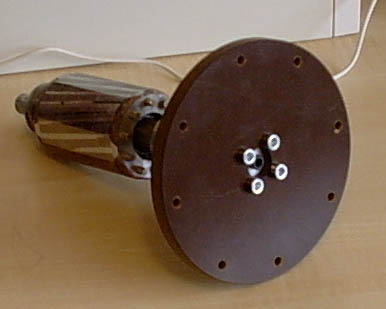 |
This picture shows the assembly of the rotor, disk and connecting hub just after picking up the
parts from a local machine shop that made the modifications accoring to my specifications.
On the rotor you can see the 4 flats that were milled 90 degrees apart from each other to
force the motor into synchronous salient pole mode at 1500 rpm resulting in 200BPS.
You may have noticed, that the eight holes in the disk are not spaced 45 degree, but alternating at 40
and 50 degree. This is an attempt to achieve better power throughput as suggeestet by Richy Burnett.
|
Here you can see the hub that connets the disk to the rotor shaft.
|
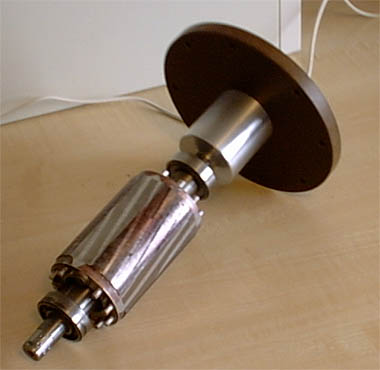 |
 |
This is just a pic of the half- modified and finished motor housing
with the disk assembly to give an impression how it could look in the end.
The motor had originaly a large flange and finns around the now silver looking front.
I removed this to make room for the stationary electrodes that will be located
behind the disk.
|
Here are the pieces of the RSG motor just after applieing some varnish.
I left the shop at this point as I knew that if I stayed, I would only
mess up everything ... now I am waiting until tomorrow to assemble the parts.
The 8 pairs of cap nuts that are used as flying electrodes are already in place
|
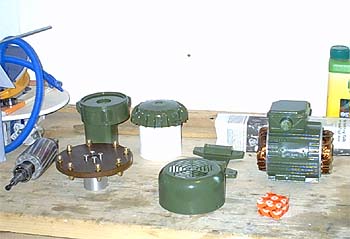 |
 |
Finaly the assembled motor with disk. The bearings are still the old ones as I could not get
them off the shaft. But the torque of the motor seems high enough to deal with the drag.
Update: I finally found time to replace the bearings. The new ones run smoother but not really
with less drag than the older worn as the bearings are of the encapsulated type.
However, this is not a problem as the motor developes enough spare power to hadle this.
|
Here you can see the disk spinning under fluorescent light. The sectors of light and shade on the hub indicate
the motor is syncing perfectly.
Unfortunately the motor tends to stall if you try to start it from a wrong position, but this will not be too
critical later. I left the motor running for some minutes and it seems it does not heat up too much.
BTW: the disk is really smooth to an astonishing degree, when you touch it lightly on the outer edge while spinning
you can hardly notice any movement or imbalance.
|
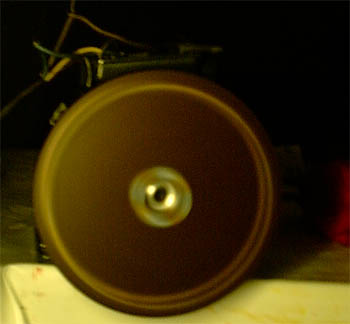 |
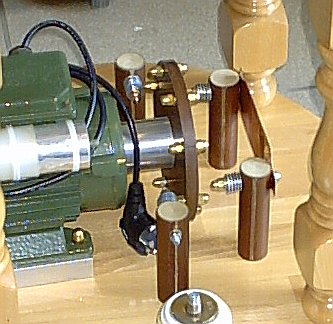 |
This is the first time all the RSG components fit together on the baseplate.
Like in my first RSG attempts I used washers of alternating size and threaded
rod to make some kind of cooling fins on the stationary electrodes. I am not really
sure if this helps, but it looks cool anyway.
The gap employs 4 serial gaps with a breakrate of 200 BPS
|













